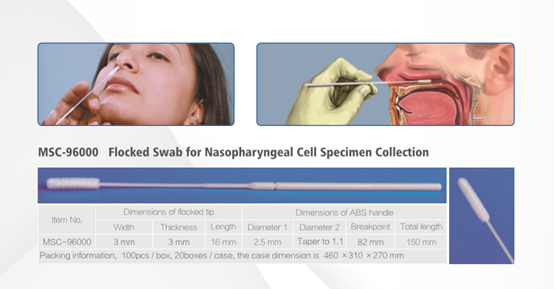Nobody Could Always Get Rid of Seasonal Flu

Once it comes to irregular changes in weather, there spreads the outbreak of seasonal flu publicly. It turns out that nobody can always get rid of it. Sometimes, a lot of blame for this terrible disorder should be laid at the overwhelming virus rather than individuals’ poor immune-system. As a matter of fact, flu virus today is diffusing rapidly in public like push buttons of elevators and toilets, bus handles, subway handles, etc.
However, there is no need to be in a panic. Clinically speaking, getting the flu with annoying running nose reflects the fact that human beings’ immune-system is capable to defend and function well. So, when individuals are stuck with it, ask the doctor for help and collect a nasopharyngeal swab for the specimen test or you can also use the mask of KN95 Mask Manufacturer.
What’s a Nasopharyngeal Swab Used for?

Nasopharyngeal swabs are applied for the collection of respiratory viruses such as RSV, influenza virus A and B and parainfluenza virus. For the reason that doctors make important clinical decisions accurately in accordance with your test results. Furthermore, flu specimen test weighs a lot for the public health from every single individual to the globe.
4 Steps to Collect a Nasopharyngeal Swab
Obtain: Pick a medical-grade nasopharyngeal swab fine flock tipped for high rates of sample absorption and releasing. Here let’s take medical supplies expert Mantacc’s MSC-96000 nasopharyngeal sampling kit as the main apparatus during the sample collection.
- At the very beginning, tilt the patient’s head backward nearly 70 degrees and estimate the distance from the patient’s nose to the front of the ear. By the way, have the patience to make eyes closed would less his/her tense. Certainly, it works for you as well.
- Secondly, wash hands with medical hand sanitizing lotion and wear a medical facemask in case of any accidental coughs and sneezes of the patient. Remove the packaging pouch of the Mantacc’s nasopharyngeal swab. More importantly, wear sterile gloves before you grab the nasopharyngeal stick. Relax your forefinger and middle finger and take the swab plastic stick between them. Then use the thumb finger to choose the point equal to the half distance measured at step 1(from the flocked tip to the thumb).
- Insert the swab into one of the nostrils gently and slowly and prevent any damage of the fragile surface inside. Press your thumb to the point and don’t change it anymore once you mark it. Let the swab stop immediately when the thumb point meets resistance. Or when the flocked tip reaches the patient’s posterior nasopharynx.
- Slightly rotate the swab against the nasal wall 2-3 times inside to rub enough target sample for the test. To preserve the target specimen for further testing, the sample must be stored into the sterile tube right now, also known as VTM or virus transport media paired with a 2-3ml special preservation solution. Eventually, break the plastic handle according to the scored line and screw the cap to seal it tightly.

Tips about Packing and Storing
After the collection procedure, seal the VTM tube and label the relative tag with a permanent marker instead of a pencil in order to protect the writing from rubbing off.
Pack the sample tube according to the local National Department of Transportation regulations about the shipment of biological substances. Essentially, the relative transport solution is more likely to maintain the activity of flu organisms.
Manteca has contributed to researching of medical health field for over ten years. This tube is designed with a stable preservation solution and a scientific sealing cap for the safety of the sample and its transportation. To make the target specimens live and active, the testing tube should be refrigerated, delivering to the test laboratory as fast as possible.
Why Choose a Nasopharyngeal Swab rather than a Throat Swab?
Considerations:
In some circumstances, hospital practitioners tend to decide a throat swab for oral sample collection instead of nasopharyngeal swabbing. For more scientific recommending tips, respiratory tract swabbing should be taken into consideration prior to throat sampling.
For the significant reason, that nasopharyngeal swab tends to contain even more respiratory flu virus than other types of sampling including traditional throat swabbing.
Therefore, choosing a nasopharyngeal swab is more sample-effective for the flu specimen test. More significantly, it makes the interpretation of the testing results more reasonable. Learn more at https://www.mantacc.com/



Be the first to comment on "How to Collect a Nasopharyngeal Swab for Flu Specimen Test"